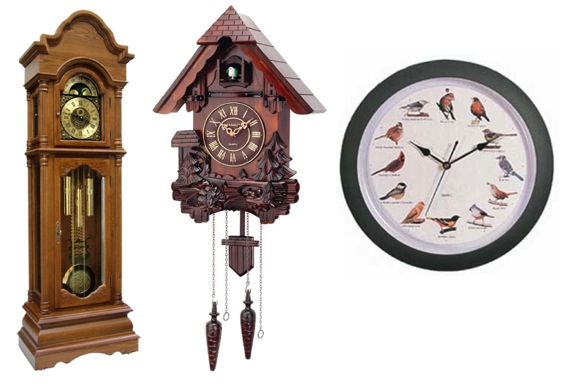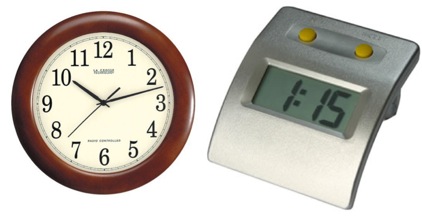Clocks are pointless if unused. They might be very expensive or look nice, but as time telling devices, they depend entirely on the existence of someone to tell time too. That said, an important part of clocks is how people experience them. Medieval clocks were large, part of buildings, and had bells. The bells are very important, because they mean that you could know the time without ever looking at the clock. The bells indicate the time to the passive person. The same holds, of course, for any sort of chiming clock.
 (image sources, left to right: 1, 2, 3)
(image sources, left to right: 1, 2, 3)
In contrast, non-chiming clocks require the time to be read by an active person. There is no mechanism for nonspecific indication of the time. That we care enough to look at our clocks so often says a lot about the important role they play in our society - we can't do without clocks.
The visual experience of a clock is also important. Let's compare the two main styles of clock: analog and digital. The first generally has hands (or, as we now know, just a hand) that sweeps in a circle over a 1 or 12 hour period, pointing to numbers along the circumference. The second is generally a visual display of the numerals themselves. What are the differences between the two? Aside from one being better for geometry and one perhaps simpler to read, it is important to recognize what one does not show. On an analog clock, the numbers are always there even when the hands are not pointing to them. On a digital clock, the only visible time is the current one; you can't even see where it was a few minutes ago (O'Malley 311). Also, digital clocks emphasize the linear conception of time, as the hours advance from one to the next; analog clocks imply a circular conception of time, as the hands move in a visualizable path that will eventually take them back to where they are now.
 (image sources, left to right: 1, 2)
(image sources, left to right: 1, 2)
Additionally, there is a difference in the precision of experienced time between these two types of clocks. Reading the numerals off a digital clock is very easy, and so you can know the exact minute (and sometimes second) displayed. It is more difficult to read what is not there, as to round 5:13 to 5:15, and say "quarter past five." The reverse is true of an analog clock - it is hard, sometimes impossible, to read the exact minute when a hand is between numbers, but it is quite easy to round to the nearest five minutes. Digital clocks, then, correlate with a more precise and specific experience of time than analog clocks.
But don't get the idea that it is all the clocks' doing, changing how we perceive time. We're the ones who put the clocks there in the first place, and we can take into account the differences when we pick what kind of clock to place where.
The Clock main page: Nathan's Thing / Time as Social Concept / Clock as Social Object / (Im)Precision in Time / Yesterday and Tomorrow / To Catch a Train / Experiencing the Clock
